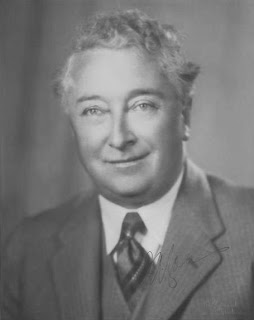1931 was a
remarkably complicated year. My focus is on the fight for New
England self-government, but that fight was taking place against a
backdrop of economic and political turmoil that would reshape the Australian
political landscape.
From 15
March 1931, NSW began to systematically default on interest payments, forcing
the Commonwealth to make the payments instead. By the end of June, the net
total paid out by the Commonwealth had reached nearly four million pounds. In
June, Premier Lang accepted the Premiers’ economic reconstruction plan but
still had no intention of resuming interest payments.
By the end
of June, the State’s financial position had deteriorated to the point where,
even after non-payment of interest, public service salaries could not be met
from mid July. In response, the Lang Government introduced emergency
legislation increasing income taxes by between 60 and 75 per cent.
The defeat
of this legislation forced NSW to go cap in hand to the Loan Council seeking
financial support. The price was resumption of interest payments, together with
Lang’s implementation of the Premiers Plan.
Under
pressure, the Australian Labor Party splintered into Lang and anti-Lang
factions, while Joseph Lyons (photo) led a group out of the Party to form a new party,
the All for Australia League. In May 1931, the Lyons
block merged with the Nationalist Party to form the United Australia Party (UAP)
with Lyons
Hurt by
internal dissent and facing a hostile Senate, the Scullin Labor Government
became increasingly helpless. Late in 1931, the Lang supporters in the Federal
Parliament combined with the UAP to defeat the Government and force an early
election.
At local
level, the New England leadership in April
1931 faced four related problems.
They had
first to consolidate support for the separatist cause in the North. Secondly,
they had to reach some measure of agreement with the other country movements as
to organization, objectives and method or risk destruction by country in-fighting.
Thirdly, the future relationship (if any) between the Country Party and country
movements had to be defined. Finally, there was the continuing problem, how to
push the separatist cause to a successful conclusion.
There is
only space here to sketch key features. On 28 April at a first unity
conference, the four new state movements agreed a common platform, although
differences remained. This was followed by a second unity conference on 18 June
that resolved remaining differences and created a central council. Then on 14
and 15 August complex and sometimes difficult negotiations saw the creation of
a United Country Movement with the Country Party as its political wing.
In October,
a unity meeting between all the main non-Labor forces led to the creation of a
coalition agreement in which all parties including the United Australia Party
adopted the Country Party platform including new states.
Action to
achieve self-government for New England
appeared within reach. It was not to be quite as easy as that.
Note to readers: This post appeared as a column in the Armidale Express Extra on 10 December 2014. I am repeating the columns here with a lag because they are not on line outside subscription. You can see all the Belshaw World and History Revisited columns by clicking here for 2009, here for 2010, here for 2011, here for 2012, here for 2013, here for 2014,.
If you want to follow the story of the Northern or New England self-government movement, this is the entry post for the series.










No comments:
Post a Comment